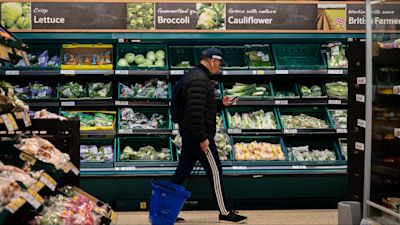London, 17 September 2025 — The United Kingdom’s inflation rate held steady at 3.8% in August, according to the Office for National Statistics (ONS), showing little movement from July. However, where inflation is heating up is in food and non-alcoholic beverages — prices in that category rose 5.1% year-on-year, marking the fifth consecutive month of increase.
What the Figures Tell Us
The overall Consumer Price Index (CPI) inflation rate in August stood at 3.8%, matching July’s reading. Meanwhile, the broader measure that includes owner-occupiers’ housing costs (CPIH) rose by 4.1% over the last 12 months — slightly down from July’s 4.2%.
This stability suggests that while inflation remains entrenched above the Bank of England‘s target of 2%, many of the factors contributing to inflation are being offset by others. For example, the easing of airfares (which had caused large year-on-year increases previously) and slower rises in certain services are helping to balance out pressure from key cost drivers like food and housing.
Food Prices: The Rising Squeeze
Food and non-alcoholic drink inflation rose to 5.1% in August, up from 4.9% in July. Notably, this includes steep price increases in items such as vegetables, milk, cheese, eggs, and fish. Some staples like bread and cereals, as well as oils and fats, saw less dramatic increases or even slight drops in certain segments.
On a monthly basis, food and drink prices increased by 0.4%, compared with 0.2% in the same month a year ago — signalling that the pressure is not only long-term but also building month by month.
Other Components and Inflation Drivers
- Housing and household services, including owner-occupiers’ housing costs (OOH), continue to exert pressure. The OOH component rose by 5.3% year-on-year, though this is slightly lower than the previous month’s figure.
- The transport category saw mixed results: while airfares dropped relative to last year, motor fuel costs edged upward. For many consumers, petrol remains an unpredictable expense.
- Prices in restaurants and hotels remain elevated, contributing significantly to the inflation rate — a reflection of service-sector inflation staying ahead of expectations.
What It Means for Households and the Economy
For many households, the sticking point continues to be food. Even as some of the more volatile inflation pressures ease, rising grocery bills bite hard — especially for lower-income families for whom food makes up a larger share of monthly expenditure. The increase in staples like dairy, eggs, vegetables, and fish hurts particularly.
Persistent food inflation complicates the inflation outlook. Even if energy costs or transportation costs moderate, food is a daily necessity, not a discretionary item. There is concern that households will continue to feel squeezed even if headline inflation settles or falls slightly.
On the interest rate front, the Bank of England is unlikely to feel enough relief from stable overall inflation; food inflation remains a wild card. Though many economists expect that interest rates will be held at 4.0% in the near term, the possibility of cuts seems unlikely unless inflation across both services and goods starts to move more decisively downward.
Government and Official Reactions
Chancellor Rachel Reeves has acknowledged the challenges faced by households and reiterated the government’s commitment to reducing costs wherever possible. She faces mounting pressure to deliver measures in the upcoming Budget (scheduled for November) that can help alleviate the cost of living.
Meanwhile, analysts are debating whether inflation will peak in September or continue to creep upward, especially if supply chain disruptions, climate pressures on agriculture, or global commodity price fluctuations arise.
The Outlook: What to Watch
- Food inflation trend: Whether food price increases stabilize, decline, or continue to increase will be a key focus.
- Core inflation and services: If services inflation continues to stay elevated, there may be greater resistance to rate cuts.
- Fuel and energy: Shifts in oil prices or utility costs could quickly impact inflation again.
- External shocks: Weather events affecting crops, global supply disruptions, or geopolitical issues remain risk factors.



